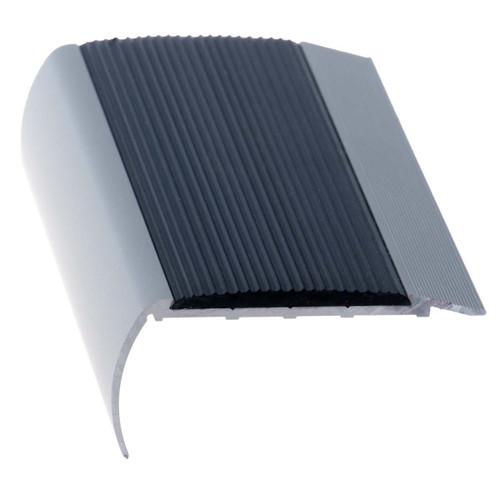ממומן
Reflective Tapes and Tactile Ground Safety Indicators

Safety is one of the most important aspects of any public space, workplace, or construction site. Whether it’s a busy road, a warehouse, a car park, or a shopping centre, having clear visual and tactile safety cues helps prevent accidents and guide people safely through their environment. Two of the most effective safety solutions used today are reflective tapes and tactile ground safety indicators. Both play a vital role in improving visibility, accessibility, and overall safety for everyone, especially in low-light or high-risk areas.
In this blog, we will explore what reflective tapes and tactile ground indicators are, where they are used, how they improve safety, and what to consider when choosing them.
Understanding Reflective Tapes
Reflective tapes are adhesive strips made from highly visible materials that reflect light back to its source. This simple yet effective technology makes them easy to spot even in dark or poorly lit environments. They are commonly used on roads, vehicles, machinery, safety barriers, warehouses, stair edges, and work zones.
The surface of reflective tape contains tiny glass beads or microprisms that bounce light back toward the direction it came from. This retro-reflective property makes the tape glow brightly when illuminated by headlights, torches, or any light source. Unlike ordinary coloured tape, reflective tape doesn’t rely on ambient lighting; it actively reflects light, which makes it extremely effective in dark conditions.
Reflective tapes are available in a variety of colours such as yellow, red, white, blue, and silver. Each colour often has a specific meaning in safety marking. For instance, yellow is used to indicate caution, red for danger or stop areas, and white for general guidance or boundary marking. Many reflective tapes also come with anti-slip surfaces, which make them suitable for steps and ramps where both visibility and traction are needed.
Uses and Benefits of Reflective Tapes
Reflective tapes are used in a wide range of industries and settings. On roads and highways, they are applied to barriers, poles, and guardrails to increase visibility for drivers at night or in bad weather. In workplaces such as factories and warehouses, reflective tapes help identify hazards, mark pathways, and highlight low-hanging structures or equipment edges. In parking lots, they guide vehicles safely, while in public buildings they are often placed on staircases and emergency exits to lead people out during power outages.
The main benefit of reflective tape is enhanced visibility. By clearly marking edges, obstacles, or walkways, reflective tape helps people identify potential hazards before they get too close. This reduces the risk of accidents such as slips, trips, and collisions. It also provides visual cues that help guide both pedestrians and vehicles safely.
Another key advantage is cost-effectiveness. Reflective tapes are relatively inexpensive compared to installing lighting systems or mechanical safety barriers, yet they provide a high level of safety enhancement. They are easy to install, durable, and require minimal maintenance. In outdoor environments, good-quality reflective tapes can withstand UV exposure, rain, and temperature changes without losing their brightness.
Reflective tapes are also versatile and easy to apply. They can be cut into different shapes and sizes, applied to almost any clean surface, and removed or replaced when necessary. Their flexibility allows safety managers and facility owners to create custom markings for different purposes.
Understanding Tactile Ground Safety Indicators
While reflective tapes mainly improve visibility, tactile ground safety indicators serve a different but equally important role — they enhance accessibility and navigation for people who are blind or have low vision. These are small raised studs or bars installed on the ground surface, typically made from materials such as stainless steel, rubber, ceramic, or polyurethane.
Tactile indicators are designed to be felt through the feet or a walking cane, allowing visually impaired individuals to detect changes in their surroundings. They provide physical feedback that helps people identify potential hazards such as steps, ramps, road crossings, or platform edges at train stations. By using tactile patterns, these indicators give clear, non-visual cues that guide safe movement through public areas.
There are two main types of tactile ground indicators: warning indicators and directional indicators. Warning tactile indicators consist of raised dots that signal a change or hazard ahead, such as the edge of a staircase or a pedestrian crossing. Directional tactile indicators, on the other hand, have raised bars that guide the user along a safe path or route. Both types are critical for ensuring accessibility and compliance with safety standards in public infrastructure.
Importance of Tactile Ground Indicators in Public Safety
Tactile ground indicators are now a legal requirement in many parts of the world under accessibility laws and building codes. In Australia, for example, their use is governed by the Australian Standard AS/NZS 1428.4, which specifies where and how tactile indicators should be installed to ensure consistent guidance for people with vision impairment.
The primary purpose of tactile indicators is to prevent accidents by alerting individuals to potential dangers. At train and bus stations, they are installed near platform edges to warn passengers not to cross into hazardous areas. On footpaths, they indicate safe crossing points and warn of driveways or intersections. In commercial buildings, they are often found near escalators, stairs, or ramps to provide tactile cues before a level change.
Beyond safety, tactile indicators also promote inclusivity and independence. They make public spaces accessible to everyone, allowing visually impaired people to navigate confidently without constant assistance. By incorporating tactile indicators into urban and building designs, communities create environments that respect the dignity and independence of all individuals.
Combining Reflective Tapes and Tactile Indicators for Maximum Safety
Although reflective tapes and tactile ground indicators serve different functions, they complement each other perfectly in creating safer environments. Reflective tapes improve visibility for everyone, especially during low-light conditions, while tactile indicators ensure accessibility for people who rely on touch rather than sight.
In areas such as train platforms, car parks, public walkways, and building entrances, combining these two solutions offers the highest level of protection. For instance, a stairway can have tactile warning indicators at the top and bottom steps, while the stair edges are lined with reflective anti-slip tape. This combination ensures that both sighted and visually impaired users receive clear cues about the change in level. Similarly, in underground car parks, tactile indicators guide pedestrians safely while reflective tapes highlight traffic lanes and pillars for drivers.
When properly planned and installed, reflective and tactile safety systems reduce confusion, prevent accidents, and improve the flow of both foot and vehicle traffic. They send clear visual and physical messages that are easy to understand, even in emergencies or power failures.
Choosing Quality Products and Proper Installation
To ensure lasting performance and safety, it’s important to select high-quality reflective tapes and tactile indicators that meet relevant standards. For reflective tapes, choose products that are UV-resistant, weatherproof, and certified for industrial or traffic use. Poor-quality tapes can fade or lose adhesion quickly, reducing their effectiveness.
For tactile indicators, the material and installation method are equally crucial. Stainless steel tactile studs offer a modern, durable finish ideal for outdoor areas, while rubber or polyurethane options provide flexibility and comfort underfoot for indoor use. Each installation should follow the correct spacing, pattern, and layout requirements outlined in national safety standards.
Professional installation is strongly recommended for both products. Trained installers ensure correct placement, secure adhesion, and compliance with regulations. Proper cleaning and surface preparation are also essential to make sure the tapes or tactile indicators bond correctly and last for years.
Final Thoughts
Safety and accessibility are fundamental elements of every well-designed space. Reflective tapes and tactile ground safety indicators may seem like small details, but they play a huge role in preventing accidents and promoting inclusivity. Reflective tapes enhance visibility in all lighting conditions, guiding drivers, pedestrians, and workers safely. Tactile indicators, on the other hand, provide essential tactile cues that allow visually impaired people to navigate confidently and independently.
When used together, these solutions create environments that are safer, more inclusive, and easier to navigate for everyone. Whether in a busy urban setting, a transport hub, a warehouse, or a public building, the right combination of reflective markings and tactile ground indicators ensures that safety is not left to chance. Investing in these safety measures is not only a matter of compliance but also a commitment to protecting people and creating spaces that truly work for all.






